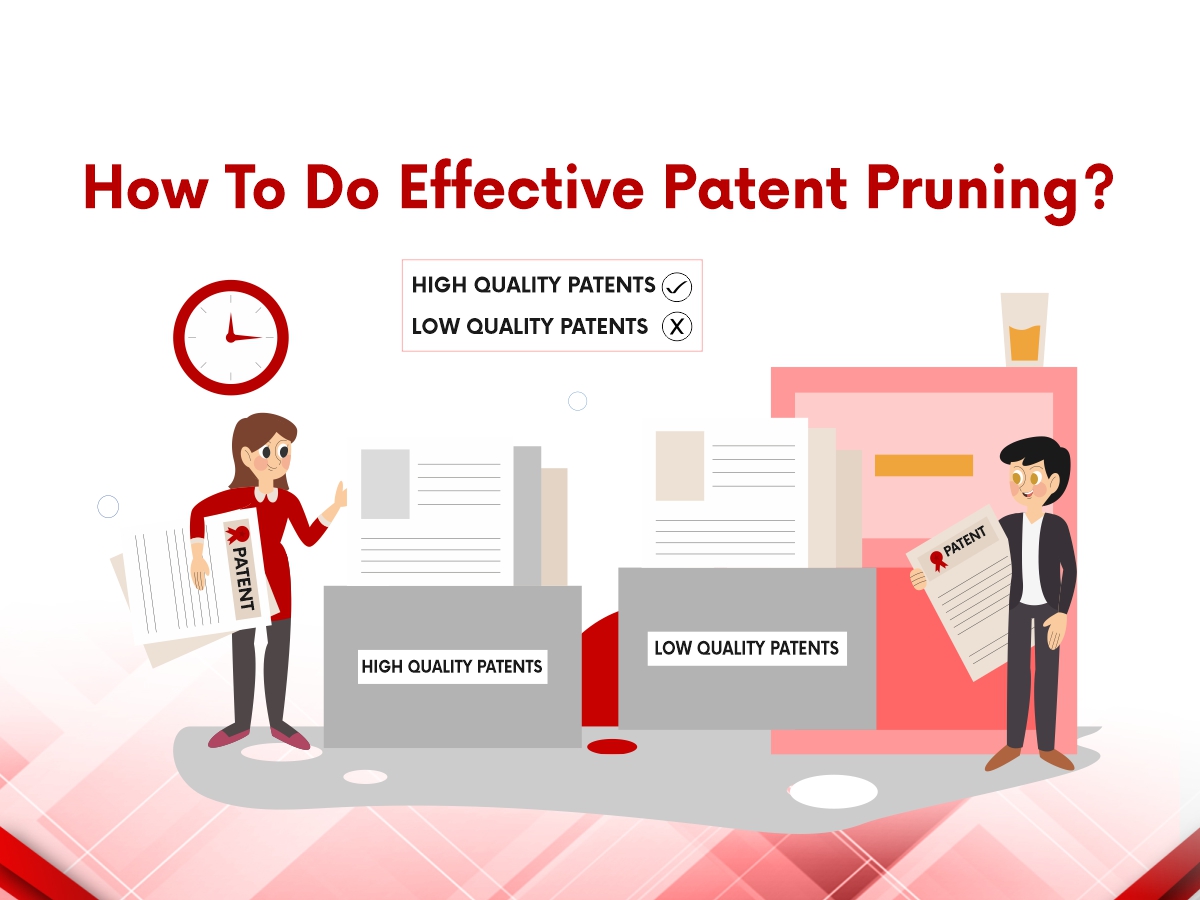Subscribe our newsletter
Please Subscribe our news letter and get update.

IP is a significant component of a company’s assets. Unfortunately, it is difficult to accurately evaluate intangible assets in general and patents in particular. That’s why proper patent portfolio analysis is required to identify relevant patents so that you can align your resources to maintain the most useful patents. By the end of this blog, you will know “how you can effectively prune your patent portfolio.” But before that, let’s understand:
When a patent portfolio is analyzed to identify, categorize, and optimize patents, a company decides to focus on high-quality or core patents and abandon low-quality patents. This process of abandoning low quality or non-core patents is known as “patent pruning”.
There is a high chance that many patents in your portfolio have poor claim language, lack infringement potential, or are invalid. Such patents serve no purpose rather than costing you various costs involved in the R&D of products, filing, and maintenance. Due to this reason, these patents cost much more than their value. That’s why it is best to either sell or abandon low-quality patents as soon as you figure them out.
Segregate patents
This is the first step in analyzing a patent portfolio. First, you need to identify which patents are core and non-core to your business. Core patents are those that protect the company’s core technology. Besides core patents, all patents are non-core patents. Further, patent pruning process can include two additional factors such as market applicability and future relevance for selecting patents for pruning.
Bundle similar patents
After segregating patents, you can group similar patents and bundle them. You can categorize patents based on technology jurisdictions, application areas, and domains. This can be done by using patent landscape techniques/business intelligence methods.
Sort patent sets (patent bundles)
Patents sets identified as being of low quality and therefore subject to pruning are further sorted on certain key variables based on decision-making bandwidth and risk tolerance. Those key variables are as follows:
After sorting patents with this process, your organisation knows which ones are not relevant. If these patents are infringed by others, then, these patents could be sold to relevant buyers. If in the end, these patents are neither relevant nor infringing, you can simply choose to prune the patents by abandoning them.
There are many costs associated with patents, especially maintenance costs. If a patent is more than 10 years old, the maintenance fees also increase because it is assumed that patents older than 10 years have significantly high market value. Patent pruning helps you avoid spending on all these costs by abandoning low-quality patents.
If you have an unusually large patent portfolio, then it can weigh down your company’s resources and prevent you from properly monetizing your patent portfolio. For that, you might require huge investments. That’s why patent pruning helps you get the most benefit for your money by determining which patents are worth retaining.
A small step like patent pruning can result in significant annual savings for a business. To keep a portfolio that is optimized, a corporation must continuously engage in this cost-effective activity. The process of optimizing a patent portfolio, which includes patent pruning, enables businesses to assess the true value of the patents in their portfolio and make timely decisions to identify risks and opportunities in the ever-evolving field of intellectual property.
Please Subscribe our news letter and get update.
© Copyright 2024 – Wissen Research All Rights Reserved.